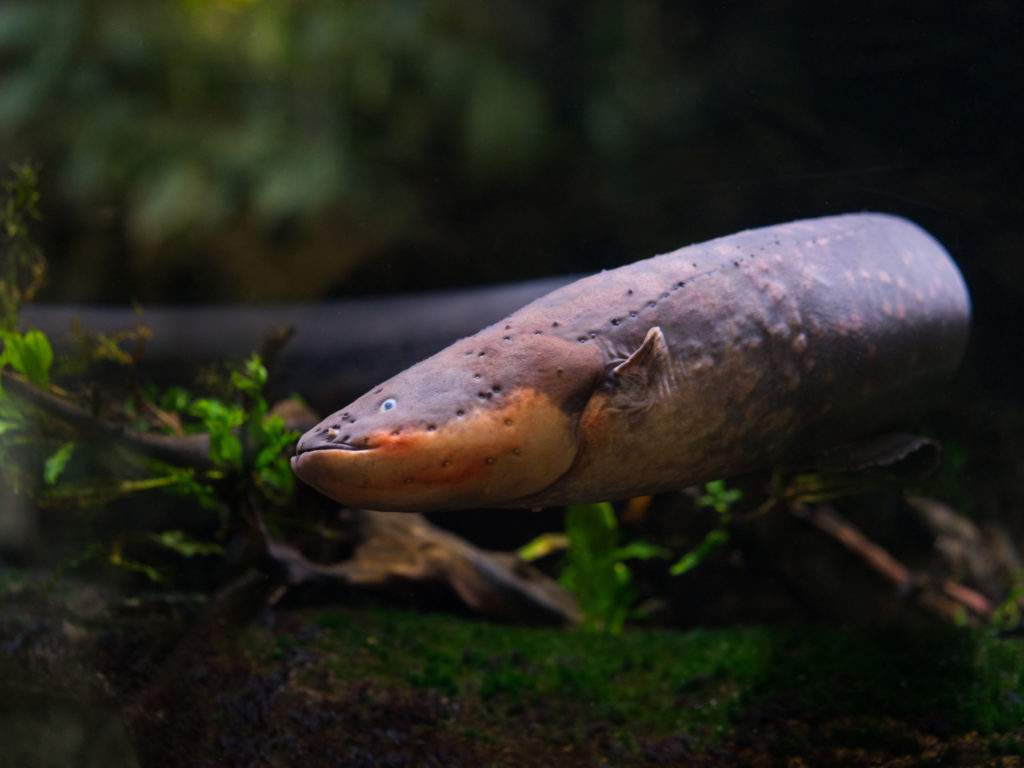Electrophorus electricus
Fast Facts
- Electric eels have adapted to thrive in low-oxygen water by breathing air from the surface.
- Electric eels communicate through electric pulses, typically for breeding purposes
- They have motion-sensitive hairs that can sense small changes in water pressure, which helps them hunt
- Electric eels are not a true eel, but a type of knife fish


Habitat
slow moving water, typically shaded

Size
6 to 8 feet

Nutrition
insects, fish, crustaceans, small mammals
Characteristics
Electric eels are a long, slender fish with a flat head. They are usually grey to brownish on the top half of their body with a colorful yellow to orange color on the bottom half of their body. The electric eel has the ability to generate 800 volts of electricity.
Behavior
Electric eels spend their time in slow-moving water. They go to the surface often in order to breathe, since they do not have gills. They will electricity for hunting, communication, and defense against predators. This is very effective because water is an efficient conductor of electricity.
Reproduction
Scientists are still learning new information about electric eel breeding. The females lay eggs during the dry season. A single female typically lays 1,200 to 1,700 eggs per year. The males make nests for the eggs out of their own saliva. The males guard the nest until the rainy season begins.


